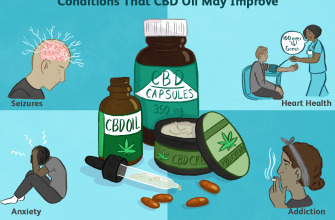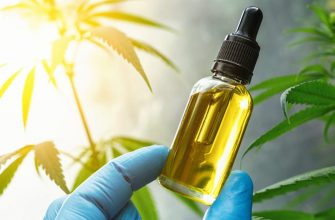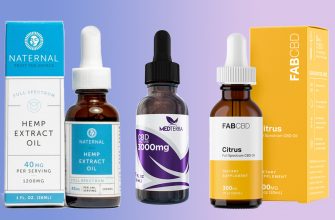By now you have heard of CBD, but there are over 100 different cannabinoids in the hemp plant. We will look at the differences between some of the most popular cannabinoids: CBD, CBN, CBG, CBC, CBDV, and CBDa.
Differences between cannabinoids
If you are just starting to explore the wide range of hemp products currently available on the market, you may not realize that there is much more to the world of CBD than meets the eye. You are probably familiar with CBD itself, a cannabis derivative that has exploded in popularity in recent years. Doctors and scientists have found that CBD can be used to treat conditions including inflammation, nausea, seizures, anxiety, depression, sleep disturbances, and chronic pain – all without any psychoactive effects. But did you know that within the same family of chemical compounds collectively known as cannabinoids, there are many more substances, each with unique and beneficial properties?
Read on to learn more about the differences between the six common and well-studied cannabinoid varieties – CBD, CBDA, CBN, CBG, CBC, and CBDV, as well as the specific uses for each.
First of all, what are cannabinoids?
If you’re new to the world of CBD, the above list of acronyms may confuse you. So let’s start with a simpler question: what is a cannabinoid?
Cannabinoids, first discovered in Israel in the 1960s, are naturally occurring chemical compounds derived from the cannabis plant. These compounds are responsible for many of the medicinal effects of cannabis, with each compound having distinct properties and benefits. To date, scientists have discovered more than 110 cannabinoids; as we continue to explore the complex molecular structures of the cannabis plant, more will likely be found.
Cannabinoid classes
Cannabinoids are divided into the following subclasses:
• Cannabichromene (CBC)
• Cannabigerol (CBG)
• Tetrahydrocannabinol (THC)
• Cannabidiol (CBD)
• Cannabinol (CBN)
• Cannabinodiol (CBDL)
• Other cannabinoids including cannabilsoin (CBE) and cannabitriol (CBT), cannabicyclol (CBL)
Cannabinoids interact with cannabinoid receptors on the surface of cells. These receptors are located in different areas of the nervous system, with two main types of receptors: CB1 and CB2.
The side effects of cannabinoids depend on the affected area of the brain. The limbic system alters cognition, memory, and psychomotor functions. Side effects on the limbic system affect pleasure, reward, and pain.

General Differences Between Cannabinoids
The key difference between cannabinoids depends on how psychoactive they are. For example, CBC, CBD, and CBG are not psychologically active, while CBDL, CBN, THC, and other cannabinoids vary in their level of psychoactivity.
The most notable cannabinoid is CBD, which has a significant sedative effect and also neutralizes the mental side effects of THC. When THC is exposed to oxygen, it forms CBD, which interacts with THC to soften the “hit”. Below we take a closer look at the specific features and details of CBDA, CBN, CBG, CBC, and CBDV, so keep reading!
How does your body use cannabinoids?
Your body reacts differently to each cannabinoid compound thanks to a wonderful built-in mechanism: the endocannabinoid system. This complex system is made up of receptors scattered throughout the body that regulate health and homeostasis. Receptors have been identified in almost every major organ system, from the brain and spinal cord to the gastrointestinal tract. CB1 receptors are most closely associated with the brain and nervous system, while CB2 receptors are associated with the immune system. These receptors, along with enzymes that aid in the cleansing after many processes of the endocannabinoid system, help our bodies maintain a stable internal environment.
When activated by cannabinoids, the receptors of the endocannabinoid system become reactive. This means that they can influence key processes in the body, including mood, memory, appetite, and pain. The specific effects of cannabis-derived products depend on the specific compound used and the location of the receptors that bind to that compound. We will take a closer look at the receptor-cannabinoid interactions of various CBD compounds in the sections below.
Want to know more? Before reading further, check out the most common cannabinoid compounds for a deeper dive into the endocannabinoid system.
What is CBD?
The best known of the cannabinoids is CBD, short for cannabidiol. Unlike THC, another well-known cannabis-derived compound, CBD has no psychoactive effects. This means you can use it medicinally without getting high, so it’s safe to use even if you plan to work or drive. CBD is also an extremely adaptable compound, so it can be made into oils, gummies, tablets, creams, and more to meet a variety of therapeutic needs.
CBD is the most studied of the cannabinoid compounds and its uses are exceptionally varied. Research shows that CBD can be used as a potential treatment for:
• Daily pain (sports injuries, bruises, bruises, etc.)
• Chronic pain
• Inflammatory conditions, including arthritis
• Anxiety and panic disorders
• Nausea and vomiting
• Seizures and convulsive disorders
• Skin conditions including acne, rashes and eczema.
You may already be familiar with these general CBD facts, but a group of closely related compounds have also caught the attention of the scientific community.
We’ll start with what is often considered CBD’s “cousin”: CBDA.
What is CBDA?
Cannabidiolic acid, commonly abbreviated as CBDA, is a cannabinoid produced by the stems, leaves, and flowers of some cannabis plants. Through a process called decarboxylation, the acid is removed from CBDA, turning it into CBD. This process is most commonly done by heating or smoking cannabis varieties that are high in CBDA. For this reason, CBDA is sometimes considered the “predecessor” of CBD.
CBD and CBDA have similar molecular structures, so their therapeutic effects are also similar. However, CBDA has been the subject of less extensive scientific research. Scientists learned that CBDA works primarily as an inhibitor of the COX-2 enzyme in the endocannabinoid system, leading to research into its effectiveness as an inflammation treatment. Recent studies have also tested the effectiveness of CBDA in certain types of cancer and as an antiemetic.
The final difference between CBD and CBDA lies in the possible methods of consumption. Since CBDA is only found in raw hemp plants that have not been exposed to excessive heat or sunlight, it is usually obtained by squeezing the juice from the plants. The juice can then be added to salads or other raw dishes for consumption. Live resins, tinctures, and other non-activated extracts can also be sources of CBDA.
General Differences Between Cannabinoids
The key difference between cannabinoids depends on how psychoactive they are. For example, CBC, CBD, and CBG are not psychologically active, while CBDL, CBN, THC, and other cannabinoids vary in their level of psychoactivity.
The most notable cannabinoid is CBD, which has a significant sedative effect and also neutralizes the mental side effects of THC. When THC is exposed to oxygen, it forms CBD, which interacts with THC to soften the “hit”. Below we take a closer look at the specific features and details of CBDA, CBN, CBG, CBC, and CBDV, so keep reading!
How does your body use cannabinoids?
Your body reacts differently to each cannabinoid compound thanks to a wonderful built-in mechanism: the endocannabinoid system. This complex system is made up of receptors scattered throughout the body that regulate health and homeostasis. Receptors have been identified in almost every major organ system, from the brain and spinal cord to the gastrointestinal tract. CB1 receptors are most closely associated with the brain and nervous system, while CB2 receptors are associated with the immune system. These receptors, along with enzymes that aid in the cleansing after many processes of the endocannabinoid system, help our bodies maintain a stable internal environment.
When activated by cannabinoids, the receptors of the endocannabinoid system become reactive. This means that they can influence key processes in the body, including mood, memory, appetite, and pain. The specific effects of cannabis-derived products depend on the specific compound used and the location of the receptors that bind to that compound. We will take a closer look at the receptor-cannabinoid interactions of various CBD compounds in the sections below.
Want to know more? Before reading further, check out the most common cannabinoid compounds for a deeper dive into the endocannabinoid system.
What is CBD?
The best known of the cannabinoids is CBD, short for cannabidiol. Unlike THC, another well-known cannabis-derived compound, CBD has no psychoactive effects. This means you can use it medicinally without getting high, so it’s safe to use even if you plan to work or drive. CBD is also an extremely adaptable compound, so it can be made into oils, gummies, tablets, creams, and more to meet a variety of therapeutic needs.
CBD is the most studied of the cannabinoid compounds and its uses are exceptionally varied. Research shows that CBD can be used as a potential treatment for:
• Daily pain (sports injuries, bruises, bruises, etc.)
• Chronic pain
• Inflammatory conditions, including arthritis
• Anxiety and panic disorders
• Nausea and vomiting
• Seizures and convulsive disorders
• Skin conditions including acne, rashes and eczema.
You may already be familiar with these general CBD facts, but a group of closely related compounds have also caught the attention of the scientific community.
We’ll start with what is often considered CBD’s “cousin”: CBDA.
What is CBDA?
Cannabidiolic acid, commonly abbreviated as CBDA, is a cannabinoid produced by the stems, leaves, and flowers of some cannabis plants. Through a process called decarboxylation, the acid is removed from CBDA, turning it into CBD. This process is most commonly done by heating or smoking cannabis varieties that are high in CBDA. For this reason, CBDA is sometimes considered the “predecessor” of CBD.
CBD and CBDA have similar molecular structures, so their therapeutic effects are also similar. However, CBDA has been the subject of less extensive scientific research. Scientists learned that CBDA works primarily as an inhibitor of the COX-2 enzyme in the endocannabinoid system, leading to research into its effectiveness as an inflammation treatment. Recent studies have also tested the effectiveness of CBDA in certain types of cancer and as an antiemetic.
The final difference between CBD and CBDA lies in the possible methods of consumption. Since CBDA is only found in raw hemp plants that have not been exposed to excessive heat or sunlight, it is usually obtained by squeezing the juice from the plants. The juice can then be added to salads or other raw dishes for consumption. Live resins, tinctures, and other non-activated extracts can also be sources of CBDA.
What is CBDV?
The latest in our review of cannabinoid compounds is cannabidivarin, better known as CBDV. CBDV is extremely similar to CBD at the molecular level, but recent research has shown that its use is exceptionally unique and valuable for people with neurological disorders.
Preliminary studies in mice show that CBDV has enormous untapped potential in the treatment of epilepsy and similar neurological conditions. As an anticonvulsant and antiepileptic, CBDV may help patients with epilepsy, Parkinson’s disease, and other conditions that may cause seizures. Along with reducing the duration and intensity of seizures, CBDV may prevent seizures should they occur. Early research into these applications for CBDV is so promising that GW Pharmaceuticals, a European cannabis company, is working on patenting the use of CBDV to treat seizures.
Along with the treatment of seizures, CBDV may be used by patients who experience vomiting and nausea, especially when these conditions are caused by chemotherapy. It has also been studied as an appetite suppressant and treatment to relieve symptoms of Crohn’s disease and multiple sclerosis.
Like all cannabinoids discussed above, CBDV is not psychoactive.
How do you know which cannabinoid works best?
After a few abbreviations starting with the letter “C”, you may find yourself a little overwhelmed by our overview of common cannabinoids. You may also be wondering how to find the CBD compound that suits you and your needs. The good news is that with such a large selection of cannabinoids, there is likely to be one that can solve just about any problem.
When narrowing down your choices to find the right cannabinoid, start with your symptoms. For many common ailments, including pain, inflammation, anxiety, sleep problems, eczema, and acne, CBD is an effective option that is readily available in a variety of formats, from topical application to gummies and tablets.
If you are considering cannabinoids as a treatment option for an unusual or potentially life-threatening condition, start by talking to a doctor you trust. They can have access to the groundbreaking research that is done every year on hemp-derived compounds, from CBDA to CBDV.
There is a list here to learn more about the many conditions under which the use of CBD products may be beneficial.
Frequently Asked Questions About Cannabinoid Differences
CBD, CBN and CBG are all cannabinoids in the hemp plant. But when used, their effects differ. CBN is great for sleep as it calms the body just like CBD. CBG, on the other hand, gives a more lively rhythm effect when taken.
The benefits of CBG range from improved mood, metabolism, pain relief, and CBG helps with inflammation.
Yes, you can take CBD and CBG together. When CBD and CBG are taken together, it gives a sense of balance in body and mind, since CBD usually has a calming effect, while CBG can have a more lively effect. So if you always get tired when you take CBD, try taking CBG with it to help keep you balanced.
CBG may help with anxiety. Scientists believe that CBG binds to various endocannabinoid receptors that relieve anxiety.




